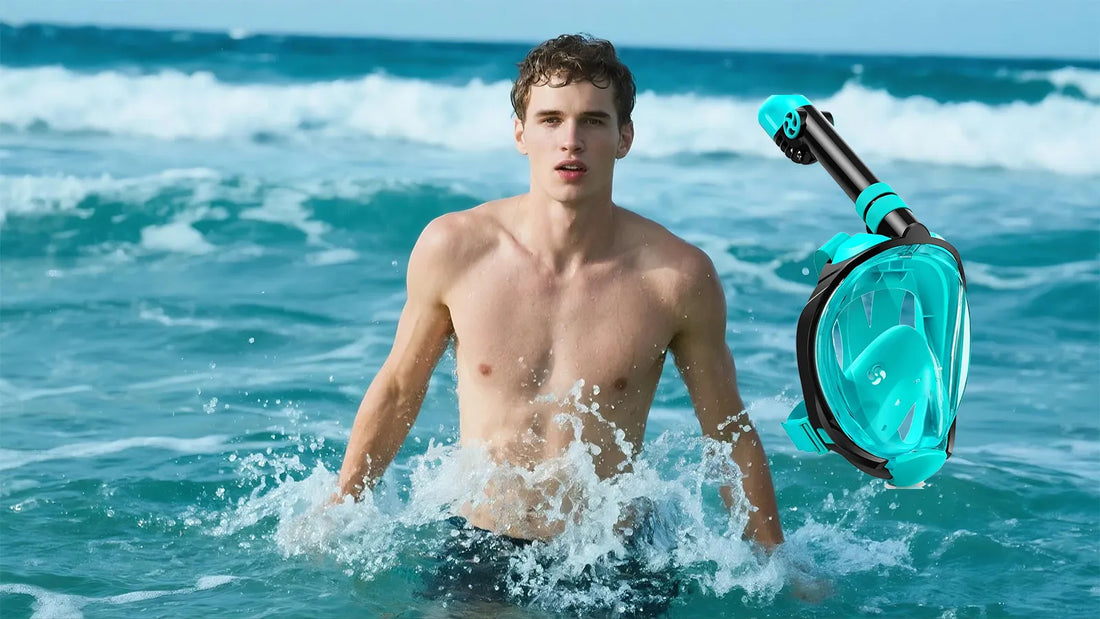Have you ever dreamed of exploring the vibrant world beneath the ocean's surface? Snorkeling is your gateway to this underwater paradise. It's an activity that allows you to witness the beauty of marine life up close, without the need for extensive training or expensive equipment. Whether you're a seasoned adventurer or a curious beginner, snorkeling offers an unforgettable experience that connects you with nature in a unique way.
What Is Snorkeling?
Snorkeling is the practice of swimming on or through a body of water while equipped with a diving mask, a shaped breathing tube called a snorkel, and usually fins. Unlike scuba diving, which requires specialized training and equipment, snorkeling is accessible to almost anyone who can swim. It allows you to observe underwater attractions for extended periods with relatively little effort.
The History of Snorkeling
The origins of snorkeling can be traced back thousands of years. Early divers used hollow reeds to breathe while submerged, allowing them to gather food or explore underwater environments. Over time, the equipment evolved, and by the 20th century, modern snorkeling gear had been developed. Today, snorkeling is a popular recreational activity enjoyed by millions worldwide.
Essential Snorkeling Equipment
To get started with snorkeling, you'll need a few key pieces of equipment:
- Snorkel Mask: A well-fitting mask is crucial for clear vision underwater. It creates an air pocket in front of your eyes, allowing you to see clearly.
- Snorkel Tube: This tube lets you breathe while your face is submerged. It typically has a mouthpiece and a purge valve to expel water.
- Fins: Fins help you move efficiently through the water, reducing fatigue and allowing you to explore more areas.
- Optional Gear: Depending on your location and preferences, you might also use a wetsuit, floatation device, or underwater camera.
How to Snorkel: A Step-by-Step Guide
Snorkeling is easy to learn, but following these steps will ensure a safe and enjoyable experience:
- Choose the Right Location: Pick a calm, clear body of water with minimal waves and good visibility.
- Practice Breathing: Before entering the water, practice breathing through the snorkel tube while standing or floating.
- Enter the Water Safely: Walk or step into the water carefully, ensuring your gear is secure.
- Start Swimming: Use gentle kicks with your fins to propel yourself forward while keeping your face submerged.
- Observe and Enjoy: Take your time to explore the underwater world, but avoid touching marine life or disturbing the environment.
Benefits of Snorkeling
Snorkeling offers numerous physical, mental, and emotional benefits:
- Physical Fitness: Swimming with fins provides a low-impact workout that strengthens your muscles and improves cardiovascular health.
- Stress Relief: Being in the water and surrounded by nature has a calming effect, reducing stress and anxiety.
- Connection with Nature: Snorkeling allows you to witness the beauty of marine ecosystems, fostering a deeper appreciation for the environment.
- Accessibility: Unlike other water sports, snorkeling requires minimal equipment and training, making it accessible to people of all ages and skill levels.
Tips for a Safe and Enjoyable Snorkeling Experience
To make the most of your snorkeling adventure, keep these tips in mind:
- Check Weather Conditions: Avoid snorkeling in rough seas or poor visibility.
- Stay Hydrated: Bring water to stay hydrated, especially in warm climates.
- Use Sun Protection: Apply reef-safe sunscreen to protect your skin from harmful UV rays.
- Respect Marine Life: Observe marine creatures from a distance and avoid touching or disturbing them.
- Buddy Up: Always snorkel with a partner for safety and shared enjoyment.
Snorkeling Destinations Around the World
From tropical reefs to crystal-clear lagoons, the world is full of incredible snorkeling spots. Some popular destinations include:
- Coral Reefs: These vibrant ecosystems are home to countless species of fish, corals, and other marine life.
- Rocky Coastlines: Explore underwater caves, arches, and kelp forests in these unique environments.
- Island Paradises: Many islands offer calm, clear waters perfect for snorkeling.
- Freshwater Lakes: Some lakes provide excellent snorkeling opportunities with unique underwater features.
Environmental Impact and Conservation
While snorkeling is a low-impact activity, it's essential to be mindful of your environmental footprint. Avoid stepping on coral, which can take years to recover, and never litter or leave trash behind. Many snorkeling destinations are part of protected marine areas, so follow local guidelines to help preserve these precious ecosystems.
Snorkeling is more than just a fun activity; it's a way to connect with the natural world and gain a deeper understanding of marine ecosystems. Whether you're exploring a coral reef or swimming in a serene lagoon, the experience is sure to leave you with lasting memories. So grab your gear, dive in, and discover the wonders that await beneath the surface!

